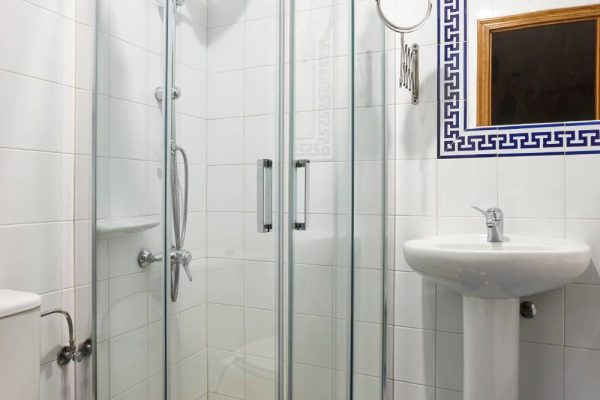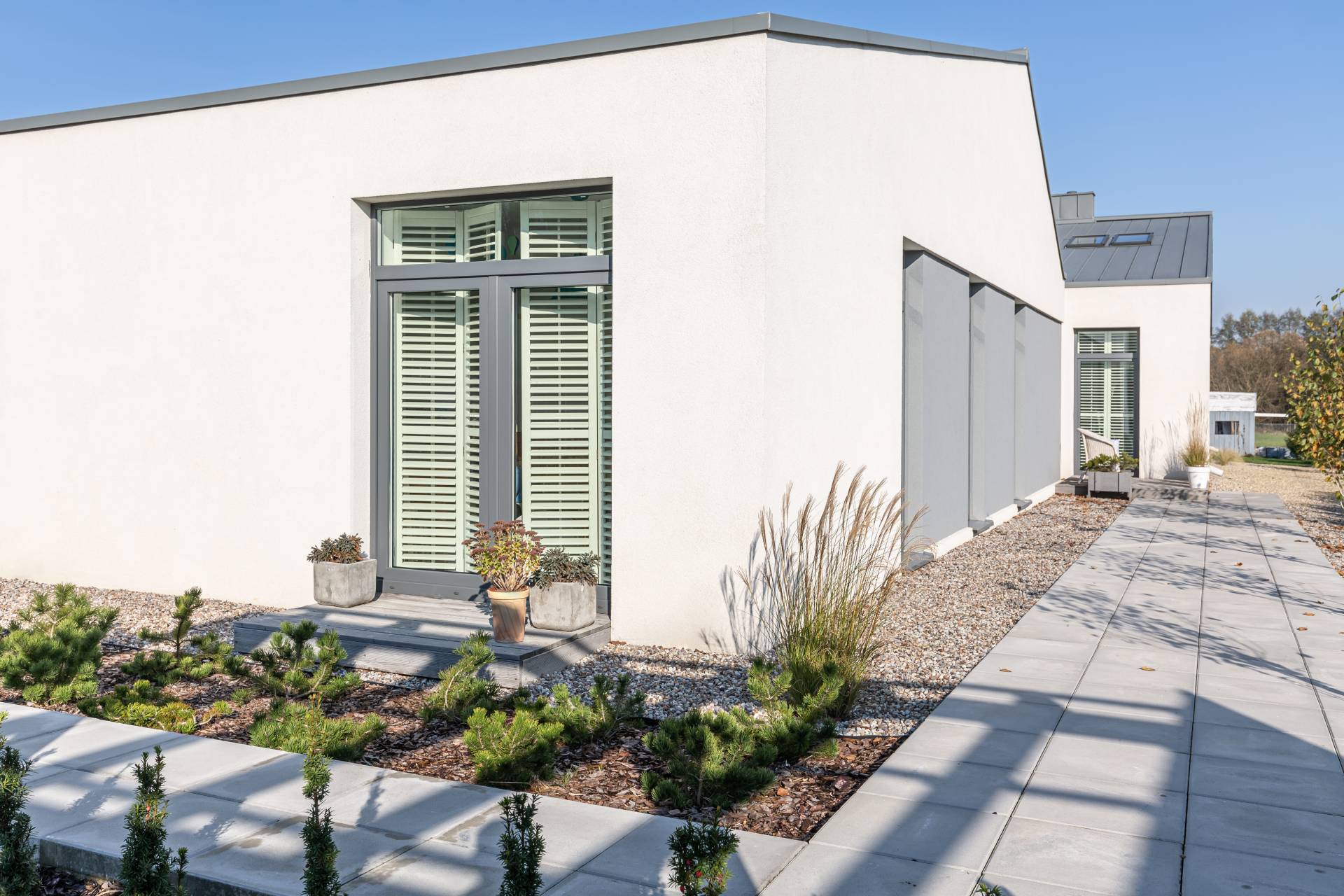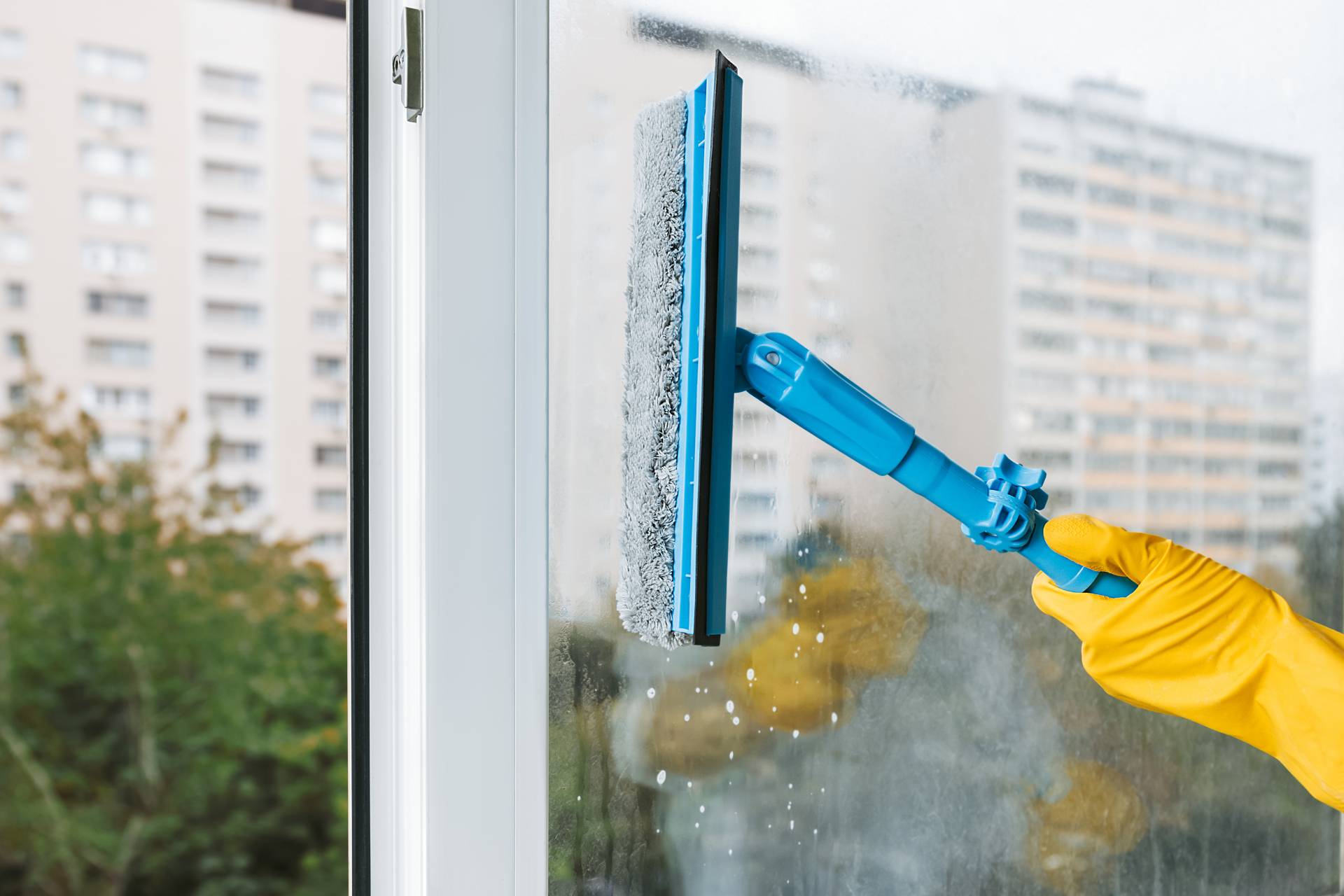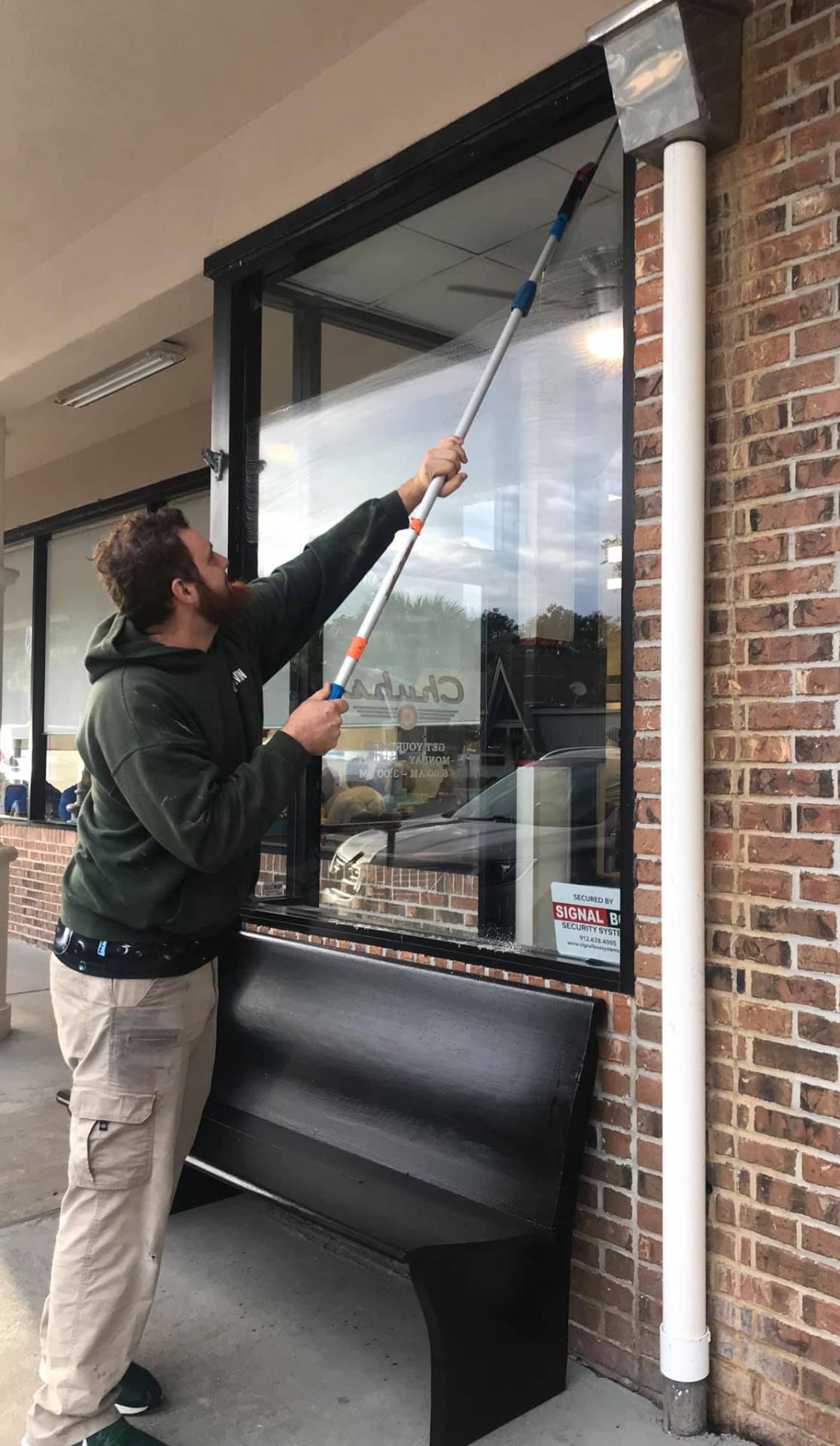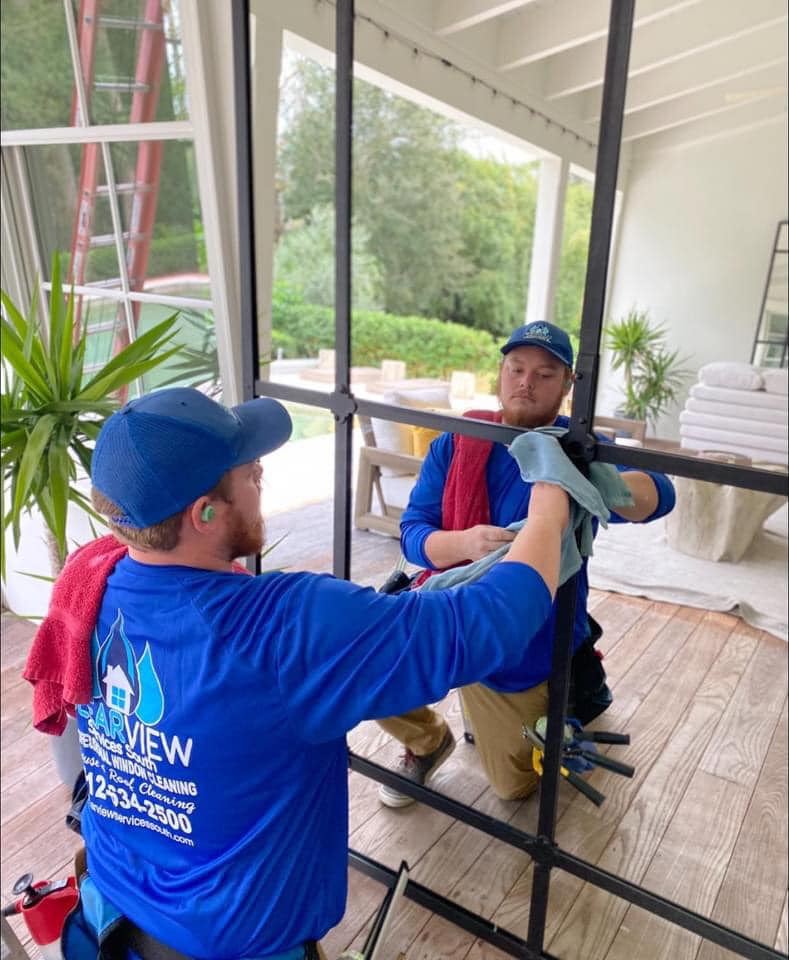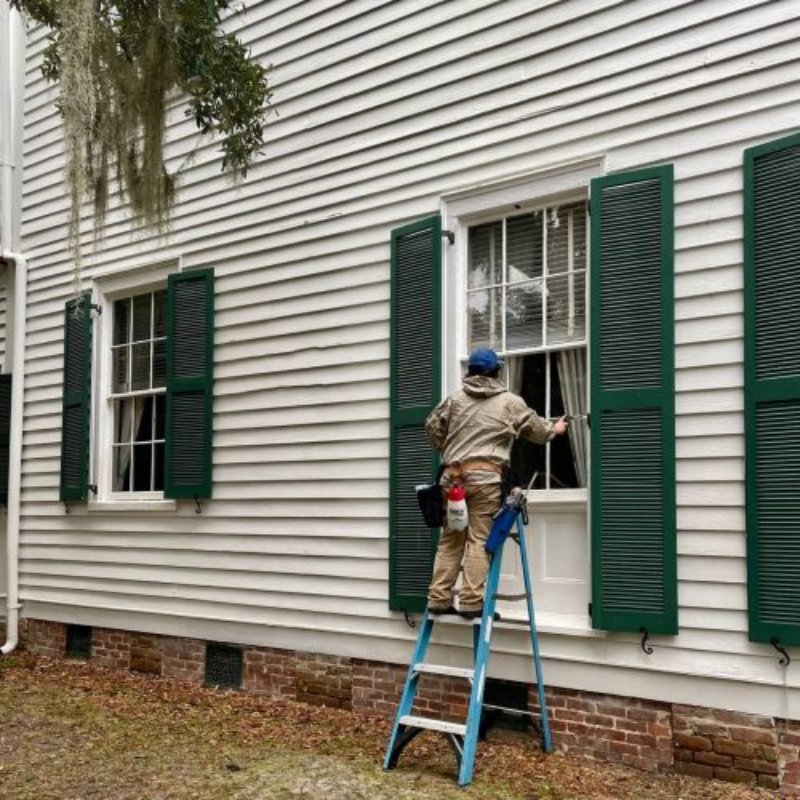Glass restoration is also known as scratch removal, and it’s the process of grinding scratches out of glass and polishing the damaged area to a like-new finish.
Restoration has many benefits, including extending the lifespan and saving time and resources compared to replacement costs.
Here’s how restoration works and its benefits.
1. Restoration Fixes Most Damages
Chips, hazing, and scratches caused by abrasive debris and chemical damage like acid etching, hard water stains, and mineral buildup can be removed with restoration.
However, scratches and chips that are deeper than just a fingernail depth require extensive glass removal to restore and may result in distortion.
Construction Debris Damage
A common cause of window glass damage is related to construction projects, including tools placed on the glass and improper cleaning of ambient materials that have dirtied it.
Ambient pollution on construction sites commonly blows or is spattered onto windows and causes damage right away or when the material is removed incorrectly.
Water Spots and Mineral Damage
Prolonged exposure to hard water (high in mineral content) can leave water spots and mineral deposits.
Graffiti is one of the most difficult types of damage to remove. Experienced restoration services remove graffiti with professional tools and equipment and restore without further damage or distortion.
Haze and Film Damage
Hazing and film damage results from certain chemicals, poor handling (commonly by the contractor), or “soft-glass,” which is an effect of some manufacturing procedures.
2. Restoration Is Cheaper Than Replacement
Restoring glass is generally cheaper than replacing it because it requires less work and materials.
Replacing involves the cost of replacing the old glass with new and replacing the surrounding frame, which could include plaster, woodwork, tiling work, brickwork, and sometimes flooring.
3. Restoration Is Better for the Environment
Restoring the window is more economical than replacing it because the fix lasts longer and doesn’t waste materials.
4. Restoration Is the Faster Option
Another advantage of restoring rather than replacing is that restoration is much faster.
It’s done on-site and doesn’t require waiting for new window measurements, cutting, or shipments.
5. Restoration Returns the Glass to Like-New
Glass restoration results in good light reflection and indistinguishable scratch removal.
Restoration technicians use a coarse-grade material to buff or make scratches on the already-scratched or otherwise damaged glass. The area is buffed with finer and finer pads to blend the damaged portion with the rest.
Finally, the glass is polished, and light refraction is tested to ensure the restoration job leaves it like new.
How Does Glass Restoration Work? Step-by-Step
Glass restoration removes scratches by buffing or polishing them with a metal compound by hand or with a tool. The professional tools that remove deep scratches include a high-speed drill with various buffing pads.
Step One: Scratch Is Reduced Completely
First, the glass around the scratch is reduced with a coarse buffing pad on a drill, and the buffed area turns into a haze.
Scratches are usually deeper at the point of impact and lighten up along the tail.
More buffing and coarser pads are needed the deeper the scratch, and the buffing tool is used with more pressure along the deeper sections of the scratch with lessened pressure along shallower areas of the scratch.
Bigger jobs involving deep scratches sometimes require a mesh buffing pad to restore it completely.
During buffing, a laser is used to take the temperature of the glass. It should be kept between 120 and 150 °F to avoid breaking.
Step Two: All Distortion Is Removed
After the scratch is buffed out, the haze that remains should look uniform in order to take the scratch out without leaving distortion.
Now the haze is removed using finer and finer buffing pads. The professional works backward through the grind pads used to remove the scratch.
The haze is reduced to the finest pad grind, and the work area is broadened for an even transition to the unaffected areas.
The hazy distortion should be spread evenly around the borders of the original scratch to avoid a distorting transition between the work area and the unaffected glass.
Step Three: The Glass Is Polished to Like-New Condition
The work area is difficult to see at this point, so it’s marked with tape or a pen.
A chemical is used with the finest pad grind to remove and polish the last haze to a practically-new shine.
Final Thoughts
The technicians at Clearview have years of experience restoring glass from all types of damage to a gorgeous, like-new finish. Learn more by getting in touch and obtaining a free quote today!

